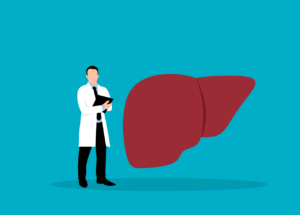Definition & Facts
Primary biliary cholangitis is a chronic disease in which the small bile ducts in the liver become injured and inflamed and are eventually destroyed. When there are no bile ducts, bile builds up and causes liver damage.
Symptoms & Causes
Common early symptoms of primary biliary cholangitis are feeling tired and having itchy skin. Many people have no symptoms when they are first diagnosed. Experts aren’t sure what causes primary biliary cholangitis, but genes and environmental triggers may play a role.
Diagnosis
Doctors diagnose primary biliary cholangitis based on your medical and family history, a physical exam, and the results of medical tests. Medical tests used to diagnose primary biliary cholangitis may include blood tests, imaging tests, and liver biopsy.
Treatment
Doctors treat primary biliary cholangitis with medicines. Doctors may treat the symptoms and complications of the disease with medicines, dietary supplements, changes in diet and lifestyle, and medical procedures.
Eating, Diet, & Nutrition
A healthy, well-balanced diet is important in all stages of primary biliary cholangitis. Your doctor can recommend a healthy eating plan that provides enough calories and nutrients to help your liver work properly and manage complications.
Clinical Trials
The NIDDK conducts and supports clinical trials in many diseases and conditions, including liver diseases. The trials look to find new ways to prevent, detect, or treat disease and improve quality of life.
Source: NIH/NIDDK
For more information, please visit https://www.niddk.nih.gov/health-information/liver-disease/primary-biliary-cholangitis
Disclaimer: The information provided on this website is for informational purposes only and is not intended to take the place of consultation with your physician.
